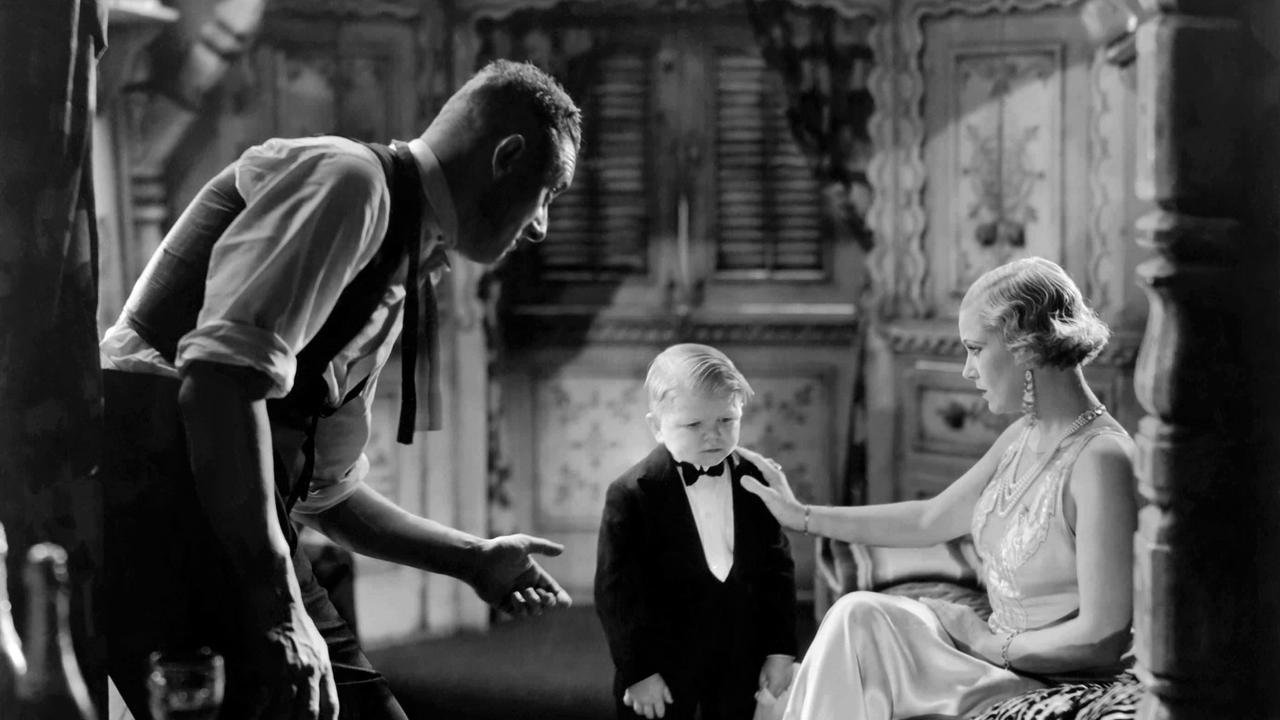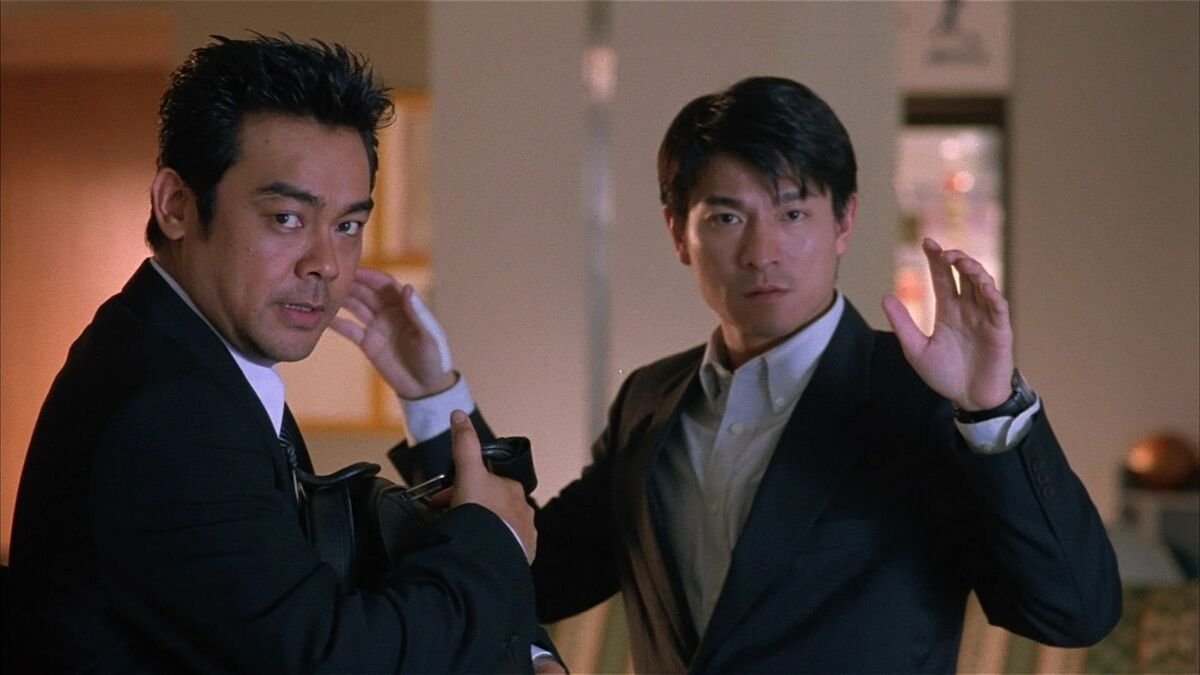Halloween Horror: Freaks (1932)
Tod Browning’s Freaks holds an iconic role in 1930s American horror, although it’s not really a horror film in the way we think of them in 2023. To be clear, it’s scary in moments, and was certainly meant to terrify audiences at the time. The movie poster, the carnival showmanship of the storytelling, hell, even the name of the film leans into the notion that you’re watching a freak show and going to be terrified at the monsters you see. Even viewed today, the film is startling for using real disabled people to play the roles of the circus performers. But it’s more a tragedy and a drama than a horror. And the “freaks” are not the monsters, but rather our heroes and the victims of the hatred and cruelty of the so-called normal world. That much is clear from the beginning.
In fact, the iconography of the film can throw off modern viewers who know little more than “gooble-gobble, one of us” and the images of carnival performers in bizarre poses. The “gooble-gobble, one of us” scene is unnerving to be sure, as the group of carnival performers welcome trapeze artist Cleopatra (Olga Baclanova) into their fellowship during her wedding reception to gentleman dwarf, Hans (Harry Earles). They bang the table and chant in unison, as if reciting the words to a spell, and the camera dollies alongside the table to capture all of them taking part in the ceremony. But it’s also a welcoming song, a song of celebration and fellowship. Despite that, Cleopatra looks on in horror. Our unease with the carnival performers soon shifts to disgust with Cleopatra, who interrupts it with vitriol, telling them that she’ll never be a freak like one of them. This dramatic pendulum swing, from the unease with the performers to appreciation of them as people to hatred of Cleopatra, defines the entire approach of Freaks. It lures us in with carnival theatrics and surprises us with domestic drama and a thrilling tale of revenge.
Cleopatra is the enemy, and in the prologue we’re told that she was once a great beauty before being turned into a freak herself. We are told by a showman that she’s now a “living, breathing monstrosity,” but we’re refused an image of her in the prologue, so as to tease us with what becomes of her over the course of the film. We soon learn that Hans, a refined dwarf who looks like a child, is infatuated with Cleopatra, at the dismay of his fiancée Frieda (Daisy Earles). Cleopatra learns that Hans has a fortune that will bequeath to his wife if he dies, so knowing little people are susceptible to illness, she marries him and poisons him in order to inherit his fortune and share it with her lover, the strongman Hercules (Henry Victor). Hans and the others eventually learn of her actions, and get their revenge.
That final scene in which they finally get their revenge on Cleopatra is terrifying to be sure. So many pre-Code horror pictures, such as the similarity structured Island of Lost Souls, only become expressionistic in the final moments. In Freaks, this moment of bravura filmmaking comes at the end when Cleopatra is discovered and the carnival performers get their revenge on her and Hercules. The rain creates a muddy ground that the performers crawl through on all fours (or twos, or ones, in some cases), scurrying beneath the carnival trailers like beasts. There's a pathetic fallacy here, with lightning and thunder, as well as dramatic visualizations and editing patterns, intercutting Hercules’ retreat with their advance. Cleopatra thinks they’re freaks, so they’ll show them what freaks can do. As the showman warned: “Don’t cross them.”
But before this moment, Freaks is mostly a domestic drama that takes us entirely behind-the-scenes of the big tent and into the lives of these performers. We meet Hans and Frieda, who are charismatic and dignified young lovers with refined tastes, who would be living as old world aristocrats if they weren’t so small and young-looking. Hans is bitter towards his treatment in the world: “They don’t realize I’m a man, with the same feelings they have.” His pursuit of the beautiful, tall Cleopatra is his way of proving he’s a man to the wider world.
We meet the conjoined twins, Daisy and Violet (Daisy and Violet Hilton), and follow their romantic travails. They are both engaged to different men, and each couple has claims on their time together, which means each couple has claims on both twins themselves, which is obviously impossible to reconcile.
We also meet Phroso (Wallace Ford), the clown, and Venus (Leila), the beauty, who are the performers who are kind to the so-called freaks, commiserating with them more readily than with Cleopatra or Hercules. We also meet more physically-disabled members, like the “pinheads” Pip (Elvira Snow), Zip (Jenny Lee Snow) and Schlitzie, or the half-boy Johnny Eck and The Living Torso Prince Randian. The appearances of these people are shocking, but Browning and his crew treat them with a sympathetic eye.
No scenes better capture Browning and the filmmakers’ love of these performers than two moments with Pip, Zip, and Schlitzie. The first is an early scene in the woods where two men come across them and get annoyed with all the “freaks” cavorting about. Their anger causes the girls to flee to their mother figure, Madame Tetrallini (Rose Dione), the fortune teller, who holds them tenderly as the children they are. One man’s anger melts at the sight of the children and ours is warmed with the love Tetrallini has for them.
The other scene is a bit later—the film only runs 64 minutes in its existing cut so every scene is only a “bit later”—when Phroso spots Schlitzie in a dress and remarks how pretty it is. Pip and Zip soon come and he says he’s going to buy them all nice hats in Paris to show them how pretty they are. You’d at first think the scene is mocking, but there’s no punchline here, nothing to undercut Phroso’s affection for these girls. He truly cares about them and the film lets it show.
In essence, Freaks is a human tale of jealousy, greed, and bad choices, of romantic feuds, children born, engagements and squabbles. It takes the domestic lives of these performers seriously before it transforms into a tale of revenge, which also asserts their full humanity. It becomes a tale of suffering begetting suffering and hate begetting hate. In the end, it becomes a kind of tale of class warfare and revenge, like so many horror pictures to come later like The Hills Have Eyes.
Freaks culminates in a shocking bit of violence that pays off the horror genre expectations, but it’s ultimately a great morality play, not merely an iconic pre-Code horror. It’s unlikely to keep you up at night with images of terror, but it is sure to move you with its deeply human storytelling and capacity to show the heights and depths of human behaviour.
9 out of 10
Freaks (1932, USA)
Directed by Tod Browning; written by Willis Goldbeck and Leon Gordon, based on “Spurs” by Tod Robbins; starring Wallace Ford, Leila Hyams, Olga Baclanova, Roscoe Ates, Harry Earles, Daisy Earles, Rose Dione, Daisy Hilton, Violet Hilton, Schlitzie, Josephine Joseph, Johnny Eck, Frances O’Connor, Peter Robinson, Olga Roderick, Koo Koo, Prince Randian Martha Morris, Elvira Snow, Jenny Lee Snow, Elizabeth Green, Angelo Rossitto.



George More O’Farrell’s The Holly and the Ivy is a perceptive Christmas drama that deserves a place in the Christmas rotation.